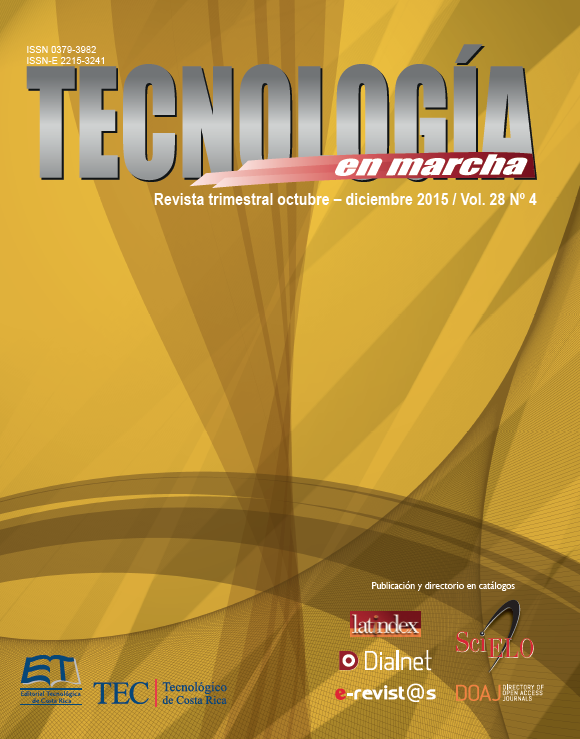Study of arsenic removal in drinking water at household level using solar oxidation and coagulation-flocculation techniques
Main Article Content
Abstract
In Costa Rica, even though there have been efforts to provide safe water to communities affected by the presence of arsenic, there is a part of the population still exposed because might not be connected to a network of aqueducts. Two solutions household level use for As reduction are presented: one is the solar radiation oxidation (SORAS) and second one is the flocculation - coagulation process. Both solutions showed reduced As concentration due to adsorption or co-precipitation on the iron (III) oxide hydroxides. The SORAS system needed 2h and 4h of exposure in a sunny or cloudy day respectively to reduce the arsenic concentration from 200μg / L to less than the standard (10 ug / L). For coagulation - flocculation system, best conditions were achieved at pH 6 with synthetic flocculant FK-930-S (polymer polydiallyl-dimethylammonium chloride) at 1 mg/L dose and FeCl3 12 mg/L dose; for natural flocculant it was achieved at pH 6 with mozote (Triumfetta semitriloba) at 250 mg/L dose, and FeCl3 14 mg/L dose. A prototype consisting in a coagulation-flocculation container and a sand filtration step was able to treat 15 liters of synthetic water with 200μg / L As and natural water with 10 and 50 ug / L. Despite these results, it is necessary to evaluate both techniques in communities, including aspects of training and acceptance.
Article Details
Los autores conservan los derechos de autor y ceden a la revista el derecho de la primera publicación y pueda editarlo, reproducirlo, distribuirlo, exhibirlo y comunicarlo en el país y en el extranjero mediante medios impresos y electrónicos. Asimismo, asumen el compromiso sobre cualquier litigio o reclamación relacionada con derechos de propiedad intelectual, exonerando de responsabilidad a la Editorial Tecnológica de Costa Rica. Además, se establece que los autores pueden realizar otros acuerdos contractuales independientes y adicionales para la distribución no exclusiva de la versión del artículo publicado en esta revista (p. ej., incluirlo en un repositorio institucional o publicarlo en un libro) siempre que indiquen claramente que el trabajo se publicó por primera vez en esta revista.

